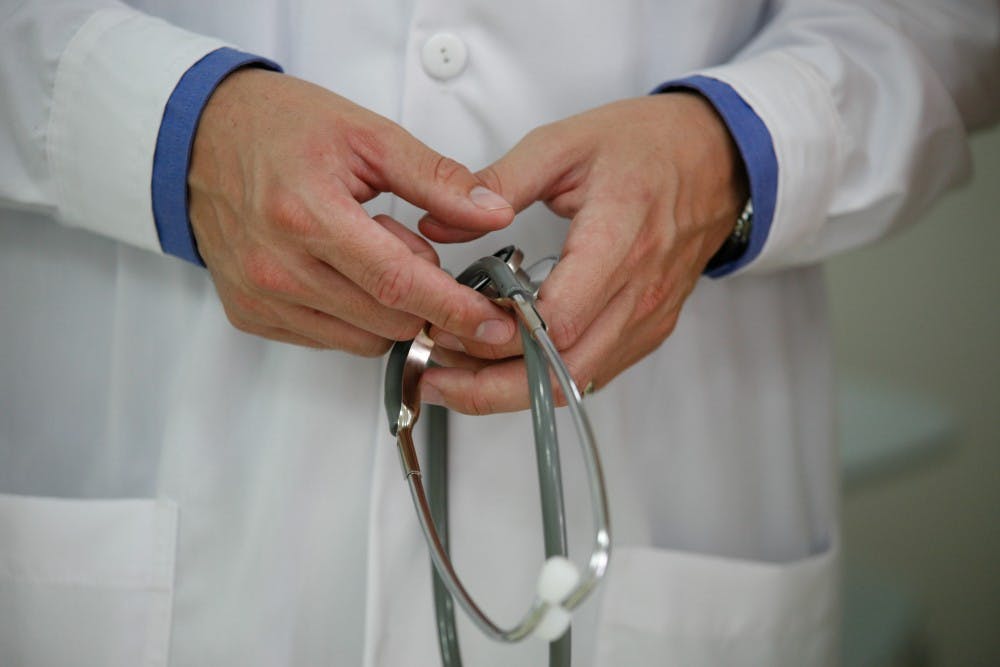What if there was a way to diagnose a medical problem without walking into a doctor’s office? Like WebMD, but more accurate and less likely into scaring you into thinking you have a brain tumor. Technology is being developed to intervene and provide quicker, more accurate diagnoses without having to make an appointment—medical opinions without having to go to medical professionals.
“I can totally see why people will use it," Kate Weaver, a senior in Nursing, said about the expansion of diagnostic technology. She said, "It just has to be like I feel like accurate…things that are evidence–based and have been shown to be effective and not faulty.”
Diagnosis is difficult and complicated. “It’s like a lot of moving parts, I think," Kate explained. "And from what I’ve seen during rounds in the hospital when doctors are talking about a possible diagnosis there’s like five different things that it could be... Not every presentation is identical."
Technology now may be able to provide more in–depth and precise analysis and give more accurate diagnosis. New developments might make it easier to detect symptoms that would have been harder for doctors to pick up on before. These devices could aid with identifying symptoms of more serious illnesses and diseases and help diagnose them in earlier stages. They also encourage more frequent diagnoses, and make testing more accessible, cheaper and convenient.
“I think it’s cool because then it’s like maybe people who are familiar with computer stuff collaborating with medical people, or doctors and nurses," Kate said, "The collaboration I think could be effective. It’s not helpful to just have one. Maybe in the future it’s like a hybrid deal.”
The start–up Canary Speech is also working on using machine learning and voice analysis to detect neurological diseases, such as Parkinson’s, Alzheimer’s and dementia. According to the BBC, Canary Speech analyzed speech and vocal patterns of individuals with these diseases and identified indicators of the conditions such as phrasing, volume, quality of speech and changes in speech patterns.
Na-Nose is a breathalyzer which can detect 17 diseases including Parkinson’s, Crohn’s, multiple sclerosis and certain types of cancer. The device can detect diseases even in early stages, Business Insider reports.
Researchers have also developed a 3D–printed smartphone attachment that analyzes DNA from tissue samples and can be used to diagnose cancer, tuberculosis and other diseases, according to the BBC. Costing less than $500 to produce, this device could offer a faster, cheaper and more convenient alternative to lab testing–advantages, which could be useful in lower-income areas and developing nations.
Then there’s TytoCare, a company that promises “a check–up without a check–in,” which offers a compromise between staying at home and getting a doctor’s opinion. The company provides medical equipment for both at–home and medical professional use which enables in–depth medical examinations without having to go to a hospital. The data from these devices is then uploaded online and sent to medical professionals for a diagnosis. TytoCare also enables users to do live exams with physicians from home through a video call. TytoHome, the household equipment package, costs around $299.
The question remains of whether technology could actually replace an in-person visit to a hospital. Kate expressed the advantages of going to see a doctor in person. “Humans can pick up things that like I don’t really think machines would ever be able to pick up on," she said.
However, Kate also sees the value of self–diagnostic technology. “I don’t think you could really like replace like years of education but it obviously is a great starting point for people to gather information and understand what questions they should ask nurses and doctors.”
Image courtesy of Creative Commons.
By Alex Proimos - Flickr: The Stethoscope, CC BY 2.0, https://commons.wikimedia.org/w/index.php?curid=19655949







